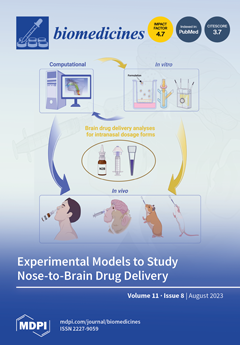High-frequency repetitive transcranial magnetic stimulation (rTMS) to the left dorsolateral prefrontal cortex (L-DLPFC) shows promise as a treatment for treatment-resistant depression in adolescents. Conventional rTMS coil placement strategies include the 5
, the Beam F3, and the magnetic resonance imaging (MRI) neuronavigation
[...] Read more.
High-frequency repetitive transcranial magnetic stimulation (rTMS) to the left dorsolateral prefrontal cortex (L-DLPFC) shows promise as a treatment for treatment-resistant depression in adolescents. Conventional rTMS coil placement strategies include the 5
, the Beam F3, and the magnetic resonance imaging (MRI) neuronavigation methods. The purpose of this study was to use electric field (E-field) models to compare the three targeting approaches to a computational E-field optimization coil placement method in depressed adolescents. Ten depressed adolescents (4 females, age:
) participated in an open-label rTMS treatment study and were offered MRI-guided rTMS five times per week over 6–8 weeks. Head models were generated based on individual MRI images, and E-fields were simulated for the four targeting approaches. Results showed a significant difference in the induced E-fields at the L-DLPFC between the four targeting methods (
,
). Post hoc pairwise comparisons showed that there was a significant difference between any two of the targeting methods (Holm adjusted
), with the 5
rule producing the weakest E-field (
), followed by the F3 method (
), followed by MRI-guided (
), and followed by the computational approach (
). Variance analysis showed that there was a significant difference in sample variance between the groups (
,
), with F3 having the largest variance. Participants who completed the full course of treatment had median E-fields correlated with depression symptom improvement (
,
). E-field models revealed limitations of scalp-based methods compared to MRI guidance, suggesting computational optimization could enhance dose delivery to the target.
Full article






